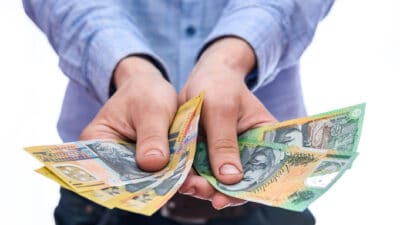Like many blue-chip ASX shares on the S&P/ASX 200 Index (ASX: XJO), the Woolworths Group Ltd (ASX: WOW) share price has had its fair, er, share of both good times and bad in recent years.
If you had bought Woolworths shares at any time in 2020 after March, chances are you've been doing very well on your investment. But if you bought Woolies last New Year's Eve, you'd be down around 5% on your investment.
Although using 'points in time' to judge your investing success like this, you can conjure up all sorts of possible scenarios. But some realities still bite hard. The fact remains that back in April 2014, roughly eight years ago, Woolies was going for just under $32 a share. Yesterday, the ASX 200 grocery giant closed at $36.60 a share. That means the Woolworths share price had put on just over $4… over eight years. That's a fairly uninspiring return of 14.5% or so over that eight years.
But this rather sobering statistic hides some important factors to consider.
How much do Woolworths dividends matter?
The first is, of course, dividends. As a long-standing ASX 200 blue chip, Woolies has a long history of doling out substantial, fully franked dividends. So what difference do the dividends investors have received between April 2014 and today make to Woolworths investors' total returns?
Let's start with our capital. If an investor bought $10,000 worth of Woolworths shares back then, they would have gotten 313 shares, with some change left over. Today, those 313 shares would be worth $11,455.80 on yesterday's close.
But we will also add the dividends that Woolworths has paid out since then. And Since April 2014, Woolworths has paid out a total of $8.34 in ordinary dividends per share, as well as one special dividend of 10 cents per share. That's a total of $8.44 in dividends per share. We'll add Woolworths' upcoming interim dividend too, since it effectively left the company's share price earlier this month when the shares traded ex-dividend.
That means the 313 Woolworths shares would have produced $2,763.79 in dividend income.
Add that to our principal capital and we have a total of $14,219.59. That stretches our total return to 42.2%. That works out to be a compounded annual growth rate of… 4.5% per annum.
But we have another factor to consider outside the dividends. No, it's not franking, although with all of Woolworths' dividends being fully franked, we can probably throw on an extra 2-3% per annum to account for this.
Forgetting a certain Endeavour?
Let's talk Endeavour Group Ltd (ASX: EDV). Woolworths spun out Endeavour, the stable of Woolies' old bottle shop and liquor businesses. It houses names like BWS and Dan Murphy's. These all used to be a part of Woolworths, but the group was kicked out of the nest last year.
Woolworths shareholders received one Endeavour share for every Woolworths share owned back in June. So an investor who has held 313 shares of Woolworths since 2014 would now also own 313 shares of Endeavour. Yesterday, Endeavour closed at $6.98 a share, so let's add another $2,184.74 to our total returns.
Endeavour has also paid out one dividend since its ASX listing, which was a payment of 7 cents per share. Plus, it will also pay out another dividend too, which has again already traded ex-dividend from the Endeavour share price. So that means we need to add another $61.04.
So our grand total for our Woolworths investment (plus principal) over the past eight years is $16,465.38. That works out to be a return of 64.65%, or 6.43% per annum.
So that's a lot better than what you might first assume. But again, perhaps not as much as one might expect. Saying that, this is just two points in time, so take it all with a grain of salt.
At the last Woolworths share price, this ASX 200 grocery giant had a market capitalisation of $43.05 billion, with a dividend yield of 2.57%.









